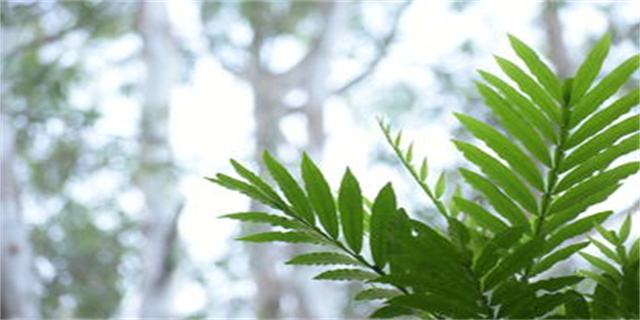Creating Effective Rune Pages for League of Legends
Introduction
The importance of a well-designed rune page in League of Legends cannot be underestimated. This article aims to guide players in creating effective rune pages that can enhance their performance in the game. By strategically selecting runes and optimizing their combinations, players can gain significant advantages in different roles and playstyles. This guide will provide insights and recommendations on how to create versatile and powerful rune pages for various champions and game scenarios.

1. Understanding Rune Types and Their Effects
1.1 Keystone Runes

Keystone runes are the most impactful runes in a rune page. They provide unique and powerful effects that significantly influence a player's gameplay. There are several keystones available, such as Electrocute, Conqueror, and Summon Aery, each suited for different playstyles and champions.
For aggressive assassins or burst champions, Electrocute is an excellent choice. It deals bonus damage to champions after hitting them with three separate attacks or abilities. On the other hand, Conqueror is more suitable for sustained damage dealers like bruisers or marksmen. It grants bonus adaptive damage and healing based on the damage dealt after landing repeated attacks or abilities.
For support champions or those looking to enhance utility and poke damage, Summon Aery is an ideal keystone. It shields or damages allies and enemies, respectively, based on the type of ability used. It synergizes well with enchanters, mages, or champions with frequent spell usage.
1.2 Primary and Secondary Runes
In addition to keystone runes, each rune page contains primary and secondary runes. Primary runes consist of three slots, while secondary runes consist of two slots. The primary runes offer bonuses in offensive, defensive, or utility aspects, whereas the secondary runes provide more specific or situational effects.
For offensive-oriented champions, the Domination tree is a useful primary rune path. It offers bonuses like additional damage, lifesteal, or spell vamp. The Sorcery tree, on the other hand, provides utility and ability enhancing bonuses, making it suitable for mages and champions heavily reliant on abilities.
The secondary runes, found in trees like Precision, Resolve, and Inspiration, offer more focused effects. For example, the Resolve tree provides defensive bonuses like additional health, shield strength, or health regeneration. The Inspiration tree offers unique advantages such as the ability to use additional summoner spells, reduced ability cooldowns, or bonus gold generation.
2. Creating Versatile and Synergistic Rune Pages
2.1 Understanding Champions and Roles
Before creating rune pages, it is crucial to understand the specific strengths, weaknesses, and playstyles of the champions you intend to use. Each champion belongs to a particular role, such as AD Carry, Support, Mid Laner, or Top Laner, and has unique abilities and playstyles.
For AD Carries, precision-based rune pages that focus on attack speed, damage, and sustain are often effective. Choosing a keystone like Press the Attack, which increases damage dealt to a target after landing three consecutive attacks, can enhance the carry potential of champions like Jinx, Vayne, or Kai'Sa.
Support champions like Janna, Lulu, or Nami can benefit from rune pages that focus on utility and shielding effects. The keystone Summon Aery, combined with runes from the Inspiration or Resolve tree, can amplify their abilities to protect and support their team during crucial moments.
Additionally, the rune pages for Mid Laners and Top Laners can vary depending on the desired playstyle. Champions that rely on burst damage, such as Syndra or LeBlanc, may benefit from the burst damage amplification provided by the Electrocute keystone and runes from the Sorcery tree. On the other hand, tanks and bruisers like Maokai or Sett can opt for rune pages from the Resolve tree to enhance their durability and sustainability in team fights.
2.2 Analyzing Matchups and Adapting Rune Pages
Adapting rune pages based on the specific matchups and game scenarios can significantly influence the outcome of a game. Analyzing the opponents' team composition and adjusting the rune pages accordingly can provide better survivability, damage output, or utility.
For example, if the opponent's team has heavy crowd control or a lot of magic damage, choosing a rune page that includes the Resolve tree can provide defensive bonuses like additional magic resist, tenacity, or shield strength. This can give players a better chance of surviving burst combos or engaging in team fights without being immediately eliminated.
Furthermore, identifying the strengths and weaknesses of the opponent's laner can help in selecting specific secondary runes that counter their playstyle. For instance, if the opposing laner relies heavily on heals or regeneration effects, choosing the Executioner rune from the Precision tree can reduce their healing by 40%, allowing for easier trades and potential kills during laning phase.
Conclusion
Creating effective rune pages in League of Legends is a meticulous process that requires understanding the different types of runes, the strengths and weaknesses of champions, and the specific game scenarios. By strategically selecting keystone, primary, and secondary runes, players can optimize their champion's performance and gain advantages in different roles and matchups. Experimentation and adaptation are key in finding the most effective rune pages that suit individual playstyles and the ever-evolving metagame. So, get creative, experiment, and be prepared to adapt – your rune pages can be the difference between victory and defeat. Good luck on the Fields of Justice!















